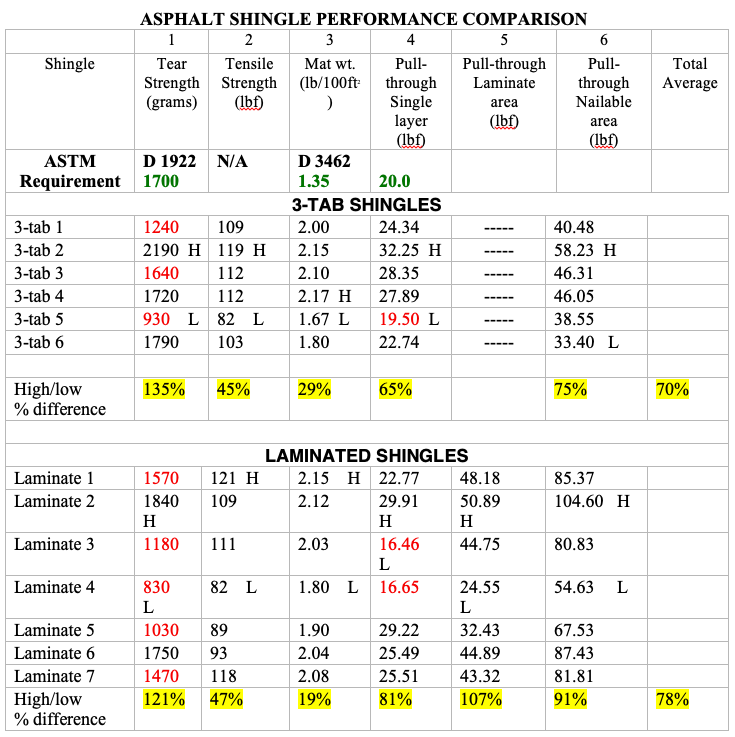s
The purpose of this chart is to show that a wide range of performance characteristics exists among shingle that may look nearly identical.
Testing of six different 3-tab brands and seven different laminated (architectural/dimensional) brands for compliance with ASTM standards was performed by a forensic engineering firm (Jim Koontz & Assoc).
- The text in green font shows the ASTM minimum requirements.
- The text in red font shows the shingles that failed to comply with the ASTM minimum requirements
- The designations H and L indicate the high and low scores in each column.
- The yellow highlighted numbers show the difference between high and low numbers in each column.
The numbers in the far right column (70% and 78%) show the overall difference between these commonly available shingles.
Low-quality Shingles
There are two main factors that affect the quality of asphalt shingles:
Thickness
The thickness of the fiberglass mat, and of the asphalt layers. Thick shingles will last longer than thin ones.
Asphalt blend
Mostly, the amount of filler used. Filler is powdered stone that is added to the asphalt mix to reduce production cost. It can be added to a maximum of about 65% without too badly affecting quality. Too much filler will allow excessive evaporation rates of the volatile compounds that keep asphalt waterproof and flexible. When this happens, the weather-facing asphalt surface will shrink faster than the underlying body of asphalt. This creates stresses that are relieved by cracking, with an appearance that's called craze cracking.
